Text
The Corner shop at Sausalito Center for The Arts; where artist & artisan converge
The integrity and spirit of the artisan and artist will converge and be spotlighted in an upcoming show on June 14th in Sausalito.
Sausalito Center for The Arts Executive Director Shiva Pakdel is pleased to announce the debut of the new @cornershopsausalito within the SCA complex and its galleries.
The curated show will feature the craft works and paintings of Berkeley artist Lauren McIntosh.
Art and crafts from a preindustrial time have always attracted McIntosh.
Of particular interest were gouache paintings that she encountered during visits to museums.
The use of gouache paints can be traced far beyond their most popular era of the 19th century. Some art historians say that a form of gouache can be found as far back as ancient Egypt and Greece.
"My aesthetic reflects my deep engagement with the art of previous centuries,” said McIntosh.
“I like that gouache looks matte and sort of dusty like fresco paintings or paintings on plaster,” said McIntosh.
In fact, the term gouache comes from the Italian word ‘guazzo,’ which means ‘mud.’
Speaking about her work, "When I first started painting with gouache, I began small, and then my work grew into larger works.”
As someone who grew up in California surrounded by art and artists, McIntosh always knew she was an artist. She studied art at the University of California at Berkeley. It was there at Berkeley she took classes and studied with Joan Brown, Robert Colescott, Elmer Bischoff, Sylvia Lark and Harold Paris.
Even though McIntosh was immersed and well-trained in art, it wasn’t until she started using gouache that her involvement with painting intensified.
A further deepening came when she utilized her experience from psychoanalysis counseling sessions; “that’s was when I really got into painting,” said McIntosh.
“I was at a point in my life where I underwent a psychoanalysis that lasted
for four years and that profoundly deepened my work,” she said. After a few sessions, the analyst said to McIntosh, “Can you paint what you are describing?”
That was the “ah ha!” moment.
So then began the visualization of her inner world even more expressive than words could describe--manifesting her dreams and fantasies and it all felt more authentic. Her inner world is an Edenic world comprised of beauty, botanical images, female figures and fauna of all varieties.
When asked, do world events, current political/cultural trends impact your work? Or, is it more about personal interests and issues that shape your work?
McIntosh responded, “both; or it can be one or the other.” Mentioning COVID-19 back in 2020, she said. “I did a series of works and settled into constant daily painting during the lockdown.”
"The combination of painting with analytic experience resulted in being less afraid or disrupted as I was before,” noted McIntosh.
“Oh, in the current world situation and political climate, I am very concerned and I do feel worried,” she said.
The 21st century does seem dystopian at the moment.
“But the application of analytical thinking to my painting does help clarify things, and dispels fears, with more understanding,” McIntosh said.
Here is where the artist and artisan converge and collaborate.
McIntosh will have plenty for people to see and experience in addition to her paintings at Sausalito Center for The Arts this Saturday.
Some of her prints and paintings have been made into cotton and silk scarves with the help of Jennifer Wechsler who curated this show at the SCA.
“These creations of Lauren’s are ones that I helped to realize by getting them printed in Italy,” said Wechsler. “Lauren’s work is one-of-a-kind and unique,” Wechsler added.
“The eight separate designs of her Silk Art scarves are all based on her original art,” said Wechsler.
The following are what will be offered and created by her:
•Framed gouache and acrylic paintings
•Printed cards - various flora and fauna designs
•Notebooks - covers are based on her artwork
•Art-based silk and cotton scarves and bandanas
•Calendars
•Block prints in hand crafted frames
•Original block prints and linoleum prints
“This show happened so fast,” said McIntosh. “I’m very excited and honored that the Sausalito Center for The Arts is featuring my work. It is my first time at SCA!”
For more information about Lauren McIntosh’s various craft work and paintings at the Sausalito Center for The Arts, Visit the SCA website or her Instagram @laurenmcintoshpainting or @minnieolga
Debuting on June 14, the curated show will be for a limited time until July 13. Admission is free.
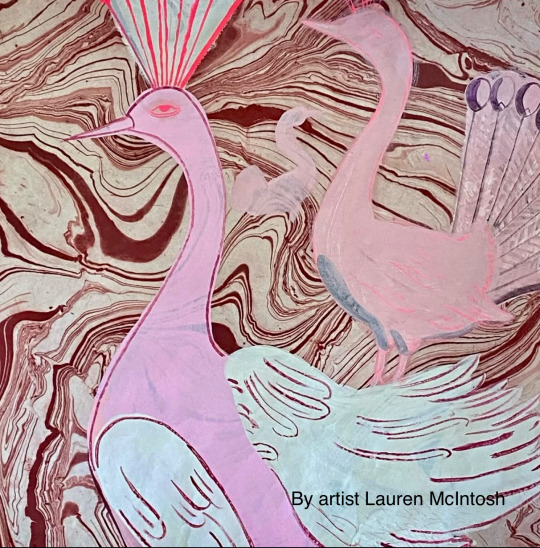
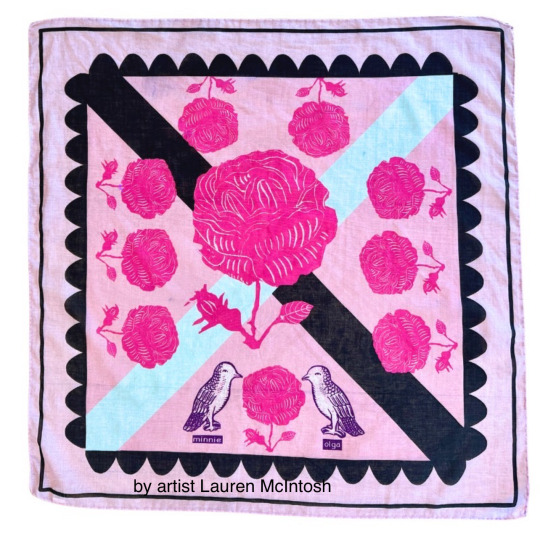
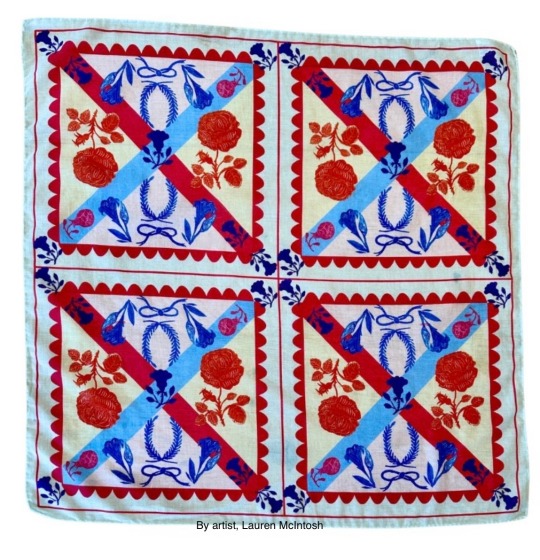
#sausalito#Sausalito Center for The Arts#Lauren McIntosh#gouache#artist & artisan#sca#corner shop at SCA
0 notes
Text
Kiwanis, Art & Magic and artisans; the ideal ingredients for “A Fiesta Fundraiser!”
This coming weekend of June 7, the Scottish Rite Masonic Center will be the place for Art Fiesta - “Experience The Magic of Art” a fundraiser sponsored by the Kiwanis of Sacramento.
The two-day event will be featuring art of multiple media paintings, pottery, glass, photography, jewelry, and more.
This will be the 67th Suburban Art Fiesta coordinated by the Kiwanis of Sacramento.
In today’s 21st Century of high tech innovations, climate change, economic challenges and a sense of uncertainty amid a seemingly dystopian mood, Kiwanis International seeks to build community.
Similar to fraternal organizations and civic groups, like the Elks, Moose, Rotary and such, the goal of the Kiwanis has always been about serving the community.
Whether it’s about helping other community groups pull together for a common purpose or providing scholarships, the Kiwanis of Sacramento have been working with the community for 100 years, since 1925.
“I’m so looking forward to this,” said Caryl Brandes of Caryl B Personal Care Products.
Traveling the two-hour drive up to Sacramento from Marin County, this will be her third time participating in such an event at the Scottish Rite Masonic Center.
With the fundraiser’s theme of art & magic, Brandes will be among the many vendors providing unique and one-of-a-kind merchandise.
For more than a decade, Brandes has established a presence at local craft fairs, maker’s markets and holiday festival events.
Her Caryl B line of personal care products has grown in its outreach and customer base, (not only due to online sales) yet because of her commitment to high quality and exceptional customer service.
Utilizing essential oils and other quality ingredients like Shea Butter, Brandes makes ‘small-batch’ soaps, lotions, creams and bath salts.
Coordinating small batches maintains quality control and ensures excellence in every aspect.
“Experience luxury and nourishment with our best selling Hand Cream with Shea Butter,” exclaimed Brandes.
“Infused with the customer favorite scent of Gardenia, noted Brandes, this cream will leave your hands feeling soft and hydrated.”
Regardless of economic conditions, according to trade publications like Fortune Business Insights, Grand View Research and others, skin care and the personal care market has been resilient. Some estimates have pointed to over $370 billion dollars spent in 2024 and it’s anticipated to continue grow in sales.
The reason for this as RetailNext explains is… “Amidst economic uncertainties and daily stressors… individuals seek solace and self-expression through beauty rituals.”
Little moments of a daily regimen provides some stability. This is especially so when stress and anxiety is high. This is why as Brandes says…
“Treat yourself to a moment of gentle indulgence with every use.”
With more than a dozen fragrances and varieties to select from (including unscented) Brandes’ Caryl B products aim to please with an understated and nurturing elegance.
Art Fiesta - “Experience The Magic of Art” opens at 10:00 AM on June 7 at The Scottish Rite Masonic Center located at 6151 H Street in the historic part of Sacramento. Admission is Free as well as Free parking.
Open until 4 PM, the two-day event continues until Sunday, June 8, opening at 10:00 AM and concludes at 3:00 PM.
All proceeds from the event go to helping youth and families in need in the Sacramento area community. For more info visit the Scottish Rite Masonic Center website.


#sacramento#caryl brandes#caryl b#Scottish Rite Masonic Center#fiesta#artisan skin care products#Kiwanis#fundraising
1 note
·
View note
Text
It’s more than “just another historical landmark;” The SDC in Sonoma’s Eldridge is “a rare ‘Environmental Treasure,” that is in danger.”
Room 110 downstairs at the Sonoma Community Center was at full capacity on April 29 as Angela Nardo-Morgan from the Glen Ellen Historical Society presented the story of preserving and repurposing the Sonoma Development Center (SDC).
Nardo-Morgan sees it as more than crucial. It’s extremely important that residents fight to save this unique landscape and the entire SDC campus.
“What is there in Eldridge at the SDC is ‘a carbon sink’ for the environment.” “Let me explain,” she said.
“A ‘carbon sink’ refers to what holds the carbon in so that it is not spewing out into the atmosphere heating up the planet and contributing to global warming.”
Clarifying more she continued. “Waste materials from demolished buildings would be considerable and end up in landfills.” “Which then, would exacerbate the problem as the materials themselves are toxic and the landfills produce harmful gases like methane contributing to global warming,” she said.
Nardo-Morgan explained further that… “if the developers, The Grupe Company and Rogal & Partners, get their way, the demolition of the campus would be disastrous.”
The audience that Tuesday evening gasped as Nardo-Morgan noted. “The plan these developers want to go forward with is to destroy more than 90 percent of the buildings & structures.”
She elaborated saying… “Restoration of buildings conserves resources by reusing existing materials and avoids the energy-intensive process of building new structures.”
This approach is more cost-effective and environmentally sound.
Nardo-Morgan has spent most of her education and career in environmental science. In addition to her work with the Glen Ellen Historical Society, she currently serves as Director of Development for the Marine Conservation Institute.
With her background, Nardo-Morgan and her colleagues documented and analyzed the entire SDC Campus and all of Eldridge. They pitched a more comprehensive environmentally-friendly plan.
Together with many others, they envision a more viable and economically sustainable future for the area.
For more than 130 years, the buildings/facilities that comprise the campus at Eldridge have become an essential part of the Sonoma Valley. “At one time, said Nardo-Morgan, the campus (then known as the Sonoma State Hospital) was the largest employer in the entire County of Sonoma.”
Since its complete closure by the State of California in 2018, the SDC campus has been neglected.
Nardo-Morgan pointed out that from the viewpoint of the developers who were selected by officials of the State of California, the SDC campus/building’s history is "repugnant" and should be erased.
Citing some the horrors and errors of previous notions towards those with mental or developmental disabilities, Nardo-Morgan shed light on the little-known origins behind the establishment of the SDC campus.
In the 1880s when not much was available for children with special needs and disabilities, two women, Frances H. Bentley and Julia M. Judah, wanted to relocate their school.
As mothers of special needs children, they took it upon themselves to make a place when few to no such places existed.
Eldridge the little town which is home to the SDC, gets its name from Oliver Eldridge. He was a ship captain who served on the commission that selected the site for the two women and their vision of a school and place for what then was called, The California Home for the Care and Training of Feeble-Minded Children.
With the help of and funds from the State of California more than 1700 acres were purchased.
With time and several name changes which eventually became the SDC in 1980, over the decades facilities expanded.
Eldridge itself has a reservoir, its own post office, a power station and everything needed for a town to be fully operational. It was designed to help people with disabilities live in a home-like, safe and caring environment. With the hope that a more gentle but structured approach would lead to a better quality of life and a possible chance to enter into regular society.
Lakes, streams, forests, wetlands and many open field spaces characterize the natural beauty which is Eldridge and the SDC.
Long before, even the faintest plans of a place for those with special needs was convinced, the expansive acreage, hills and mountain range was home to dozens of ancient native tribes as well as a biodiversity of wildlife.
“To allow this unique irreplaceable treasure to be bulldozed by developers, said Nardo-Morgan would be devastating on so many levels.”
Plans for more than 900 luxury homes and a resort hotel were halted when residents and advocates like Nardo-Morgan brought the developers plans to a halt when they sued the county over a faulty EIR and won.
“All we are asking for, added Nardo-Morgan is a plan that actually addresses and fits the requirements and particular scale of this one-of-a-kind place.”
Understanding that restoration is truly possible, even for buildings that are over 50 to 100 years old, Nardo-Morgan mentioned “second-skin” renovation techniques.
“This has been used in Europe with much success,” she said.
This approach of “second skin” aims to update buildings, by retrofitting, utilizing prefabricated or modular-tech systems without demolishing. “Thus this noninvasive approach actually renovates, by reducing waste and embodied energy,” she said.
Despite all of Nardo-Morgan’s efforts for a decade, approaching elected official after elected official, County and State officials avoid the topic of the SDC.
“Governor Gavin Newsom is on the side of the developers,” said Nardo-Morgan.
“The State of California is hungry for money,” chimed in Teresa Murphy, speaking on behalf of the Glen Ellen Historical Society.
As the hour-long talk-presentation winded down with a brief questions and answers segment, Murphy said.
“State officials think that more revenue will pour in from property taxes.”
Murphy pointed out that revenue from property taxes on new homes will not solve the State of California’s budget deficit.
The Sonoma League for Historic Preservation which helped promote the presentation/talk that evening vowed to make the SDC a priority.
Speaking on behalf of The League, both the Executive Director, Robert Demler and Board of Directors member Hewitt Jackson highly recommended that letters and emails be sent. “It’s important that it’s on record,” said Jackson.
As residents and citizens, “we need to write, call and email all of our elected officials.” “Don’t give up!” Murphy said.
Demler then reiterated a bit more saying… “letters should be sent at least to the Office of Historical Preservation, California State Parks, and to Rebecca Hermisillo, First District County Supervisor.”
And as the more than 80 people dispersed, Jackson added. “We residents of Sonoma Valley must gird our loins as it were, for a difficult fight to save the SDC and Eldridge.”
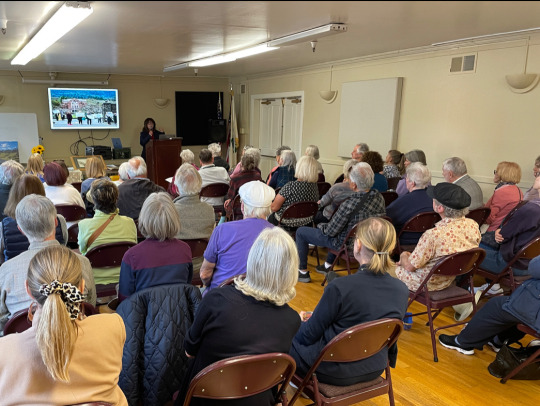
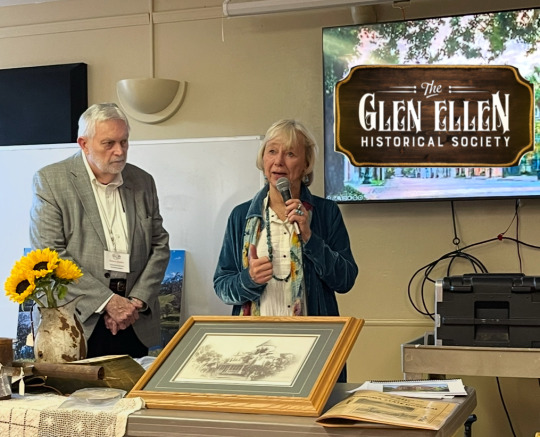
0 notes
Text
No Waiting for Fall to experience Open Studios art in San Francisco
To all the art fans out there…
You don’t have to wait for the Fall to enjoy an Open Studio experience.
This spring of 2025 has plenty of opportunities to experience art directly from the artists who make the art.
Beginning this weekend, on Friday April 11, local artists of the Bay Area will be having their own individual “Open Studios.”
“See three floors of art at Art Explosion Studios,” says figurative artist, Susan Kirshenbaum.
As someone who has been involved with art for her entire life Kirshenbaum is pleased to be able to make art full-time. As she says; “Throughout my professional life I have maintained an active engagement in the arts as a marketer, patron, and maker.”
“It's simply in my DNA,” she adds. “As the daughter of artists and art educators, I hold a strong belief in expanding people’s horizons and building community through the arts.”
This past December Kirshenbaum’s work was highlighted at the 2nd Annual Figurative Art exhibit in Sausalito at the Sausalito Center for The Arts.
To have an ‘open studio’ opportunity allows visitors to get up close to the art. It’s something that Kirshenbaum values very much.
“I'll have lots of framed digital prints (editions 1/1), drawings (digital and non-digital), prints,” she said. “I've been doing some photopolymer printmaking, Kirshenbaum mentioned, plus new art merchandise, great for gifting!”
Another artist featuring his work for the “Spring Open Studio Show” at Art Explosion this weekend is Doug Comstock.
He has been a part of San Francisco’s art and culture scene since the days of Haight & Ashbury.
Whether working on art or applying his word-tinkering skills as editor of San Francisco’s Westside Observer, Comstock admits, “I learned my craft on the fly, and I also painted the people and landscapes around me.”
Focusing on abstract forms for his art, he noted. “I am fascinated by the textural effects that acrylics and a cold wax medium affords to my art.”
“I am inspired by what happens when colors come together— when they meet with unexpected textures and the canvas itself in new ways,” he said.
“I love experimenting with the textural qualities, he continued, that add depth to a painted surface.”
Textural and tactile effects is something that ceramic-sculpture artist Catherine Merrill knows well and celebrates.
She will be featuring some her works at the San Francisco Women Artists Gallery in the Sunset District this weekend.
“The prominence of the human figure in my work results from the many years I was a dancer, and the body was the instrument to express emotions and ideas,” says Merrill.
Entitled as “Go Figurative!” The open studio style gallery show and reception on Saturday April 12 will highlight Merrill and six other artists.
“I'll be there too,” said Kirshenbaum as I will running back and forth between venues this entire weekend.”
Please and honored by the responsibility, Kirshenbaum said. “I'll be meeting the exhibition artists while checking out the installation since I juried this show.”
Despite all the obstacles involved in putting together a show and to keep an art venue alive, San Francisco continues to be a place for the arts.
The artists at 1850 Bryant Street know all-too-well the struggles that artists face especially in San Francisco.
1890 Bryant was once the Best Foods Mayonnaise plant.
When manufacturing, warehousing and distribution began to shift, the departure of longtime companies such as Hamm’s Beer, Folgers Coffee, and Union 76 occurred artists were in an ideal situation to make use of these places.
But, then the “Dot-Com Boom emerged along with the real estate boom, changing the City forever. It’s “beatnik” and “Summer of Love” “hippie” past a distant fading memory.
Economic downturns, rising rents and “gentrification” of neighborhoods in places such as ‘The Mission,’ ‘South of Market’ and even The Sunset District near Golden Gate Park, have made it difficult for artists to maintain a presence in the City.
Yet, pulling together, artists continue.
“I'm honored to share my Atelier #302 space (inside 1890) with deeply talented, kindhearted angel artists who are devoted to community, healing and creativity,” says surrealist-artist Cynthia Tom.
Since the 1990s, she has worked tirelessly to promote the arts and it’s ability to transform lives. And as Cynthia Tom states… “You'll find a sacred space for healing through creativity, wonder, curiosity, and community.”
Along with Cynthia Tom, Irene Bee Kain, Julie Andersen, Marianne Owens, Elaine Paul Alt and 75 other artists, artisans, musicians, and creatives will open the doors of their studios to the public this weekend.
“Join us, says Cynthia Tom, in the stunning and historic 1890 Bryant building.”
For more information on the various Open Studios activities happening this coming weekend beginning on Friday April 11, 2025, visit the following websites at:
Art Explosion Studios -
744 Alabama Street, #209
and at 2425 - 17th Street #121
San Francisco, CA
San Francisco Women Artists Gallery -
647 Irving Street, San Francisco, CA
1890 Bryant Studio
1890 Bryant Street, San Francisco, CA
(Photo of “Exuberance” an art-piece by Doug Comstock). Courtesy of Art Explosion and Doug Comstock.

#san francisco#cynthia tom#Catherine Merrill#susan kirshenbaum#Doug Comstock#open studios#1890 Bryant Studios#San Francisco Women Artist Gallery#Go Figurative!
0 notes
Text
Sculpture Exhibit Opening in May at Sausalito Center for The Arts
In collaboration with the National Sculpture Society, the Sausalito Center for The Arts is pleased to announce an upcoming sculpture exhibit entitled, “The Art of Form: Perspectives from The West” opening on May 17.
Enthralled that the NSS selected SCA as the venue, participating sculptor Moana Ponder sees SCA and Sausalito as an ideal fit for such an exhibit.
“I strongly recommended SCA to Lance Glasser, a fellow sculptor, who is Northern California Ambassador for NSS,” said Ponder.
“Because Sausalito is such a beautiful spot and it has a history with the arts.” “And, said Ponder the Sausalito Center for The Arts is a very accommodating and accessible venue that is spacious enough for sculpture work,”
Glasser who will also be exhibiting work in the exhibit agreed as he said. “Sausalito is ideal and SCA just lends itself well for the exhibit.”
“Moana was the persistent one, about getting SCA as the venue” he said.
He chuckled as he exclaimed, Moana was the instigator and I did the ‘leg work’ so to speak.”
“I had my doubts,” said Glasser. But Moana’s persistence pushed me and eventually the NSS and SCA were able to put it together.”
“From 102 sculpture works submitted 57 sculptures have been selected,” said Glasser.
“37 sculptors are featured in the juried exhibit,” he added.
Jurors included sculptors Paige Bradley and Rod Zullo, along with SCA Executive Director, Shiva Pakdel. Bradley and Zullo are Fellows of the NSS, the highest level of achievement in the organization.
Founded in 1893, more than 130 years ago, the National Sculpture Society, or NSS, has maintained the mission of its founders, Daniel Chester French, Augustus St. Gaudens, Stanford White and J.Q.A. Ward: spreading the knowledge of good sculpture. The organization promotes excellence in sculpture that is inspired by the natural world.
In discerning the viability and feasibility of the venue NSS was thorough. “Sausalito Center for The Arts (SCA) ticked/checked all the boxes,” said Glasser.
“And Sausalito is really an ideal place,” added Glasser. For those who consider art as an investment, Glasser said. “This is Great opportunity to buy sculpture. Because as he noted. “You can be confident that it was not AI created.”
Observing the rapid advances in technology and it impact upon so many things, Glasser said. “In a few years, that may not be the case.”
Chiming in with Ponder he reiterated the highlighting of Sausalito’s longstanding presence as a center for art and the artistic community.
“Sausalito is picturesque,” he said. And, you just can’t beat it for attracting the public - the views of the San Francisco Bay are spectacular!”
NSS has collaborated with other art organizations to host shows around the United States, most recently the Reno Tahoe International Art Show in 2023 and 2024.
A $1,000 Best of Show cash award sponsored by the Fantasy Fountain Fund through the National Sculpture Society will be granted to an artist during the course of the show.
The featured and participating artists in the exhibit are as follows:
Susan Amorde
Isidoro Angeles
Catherine Bohrman
Mark Brodie
John Broussard
Deanna Rae C. Montero
Robert Cantor
Ann Capitan
Christine Cianci
Konrad Dunton,
Theresa Dyer
Martin Eichinger
Jacquelyn Giuffre
Lance Glasser
Jane Grimm
Susanna Israel
Christopher Keating
Jonathan Livingston
Kate Mikhailov
Maidy Morhous
Scott Mortenson
Cornelia Nevitt
Luna R. Paesch
Dernham Pamela Merory
Moana Ponder
Rose Irwin Price
Luis Quaintance
Roshanak Rahimi
Mohammed Ranjbar-Sadeghi
Mardie Rees
Paul Reiber
Andrey Sledkov
Brandon Stieg
Heidi Wastweet
Nathalie Whisman
Jun Yan
Emil Yanos
Fan Yu
Susan Zimmerman
Glasser and Ponder are confident “The Art of Form: Perspectives from The West” will exceed expectations.
“Sculpture is a multi-dimensional art form,” said Ponder. “It’s 360 degrees x 360 degrees and then some!”
“I have found that I feel greater freedom of expression working in sculpture (or 3D) than I found when painting,” said Ponder.
The entire process is different and unique (from painting) noted Ponder. “The form is enhanced by the patina,” she said. “The patina, oh! That’s a whole other dimension and conversation in and of itself.” Especially so, since Ponder works primarily with metal.
“And, well, exclaimed Ponder, “you have to just come to Sausalito and see the exhibit.”
The four-week exhibit, “The Art of Form: Perspectives from The West” begins on May 17 and concludes on June 15, 2025.
For details visit the SCA website.



0 notes
Text
Review of Carole Bumpus at Readers’ Books – Sonoma – March 5, 2025
While Northern California’s wine-growing region has often been compared to that of Provence and Tuscany,there’s no comparison to actually being there.
And, Sonoma’s Readers’ Books was privileged on March 5 to have culinary travel writer, Carole Bumpus,read from her latest book ‘Adventures on Land and Sea: Searching for Culinary Pleasures in Provence and Along the Cote d'Azur’
“What makes Carole’s book special is that these are her experiences as she is traveling,” said Readers’ Books store manager, Rosie Lee-Parks. “I think it’s very brave to travel and what Carole writes, is her own perspective,” added Lee-Parks as she introduced Bumpus to a gathering that Wednesday evening of 20 people.
“In the book,” as pointed out by Bumpus to the audience,“are three separate trips. And each one was different fromthe other.”
Following in the steps of beloved author Peter Mayle, Bumpus explained that her trips became a quest to find the real Provençe.
The three separate excursions—from Nice to Nîmes, Moustiers to Marseilles, and San Tropez to San Remy—plus sailing along the Côte d’Azur, were definitely adventures of a lifetime.
She admitted that on her very first trip back in the 1990s, she could only speak French un peu or a little. And, neither did her husband, Winston, nor any of the other travelers in their party.
Still, she was enamored and enthralled by it all; eager for more.
Reading excerpts from three or four chapters, the audience was delighted. And as one woman in the audience that evening said. “It was if we were right there with Carole.” “I thoroughly enjoyed the way Carole blended the historical and cultural aspects of her travels into the writing.”
Even as Bumpus also admitted she still struggles with French, “I want to know all of the history; and that includes the ancient stuff, like that the Romans used to live in that part of France and you can visit ruins that are still there,” said Bumpus.
Even as food and wine are at the top of her itinerary, no bit of history or culture is too small or obscure for her to not take notice. “The Celtic people and the Gauls were also part of the region,” said Bumpus, “and even though there isn’t much written down about them, I want to know.”
When Bumpus talked about her specific separate trip to learn French cooking, little did she expect that a recipe she was working on had been one that the legendary polymath Nostradamus used to cook.
She explained further, “every bit of history, every bit of the cultural does have an influence, even in the food.”
The people are also what makes Provençe special. “That’s why Winston and I kept going back,” said Bumpus, “to discern the magic. It is in the spirit of the people as well as the land.”
She also admitted that it was amazing that they were able to communicate and navigate, though, especially when all was completely unknown to them. “The beach at San Tropez is very different from what we have here at theSan Francisco Bay,” she added.
“Lots of surprises along the way,” said Winston as he chimed in during the question and answer time afterward. “Back in 1997 that’s when there were no ‘Google Maps’ or GPS. We didn’t know French, yet we somehow did fine,” he said.
The exploration in Bumpus’ latest book includes all adventures both culinary and cultural.
She is committed to an all-out search of that certain, as she exclaimed, ‘je ne sais quoi’ “I don’t know what” whichmakes the area special.”
“This is my 6th book,” said Bumpus, “and this one is just pure fun.”
‘Adventures on Land and Sea: Searching for Culinary Pleasures in Provence and Along the Cote d'Azur’ is a compilation of several trips and is slightly different than her other culinary travel writings.
This particular travelogue features the medieval villages, ancient kitchens, and, most importantly, the local people who open their hearts, bistros, and homes to strangers.
“Yes, people can order Carole's books via our website, said Lee-Parks, although we now only have four signed copies left,” hinting that the book reading event was a success.
For more information, visit Readers’ Books website. Or, visit Carole Bumpus’ website.
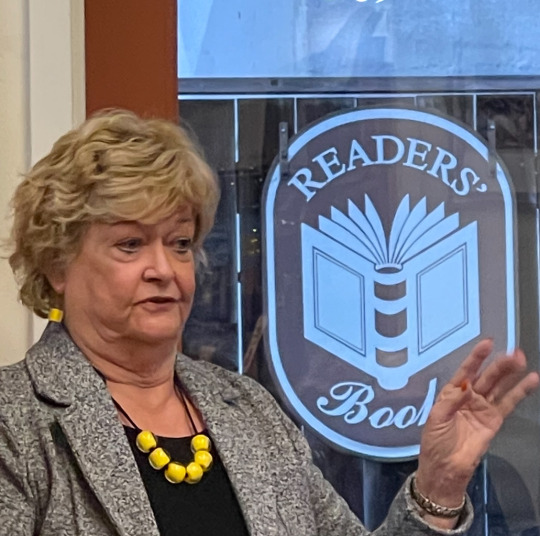
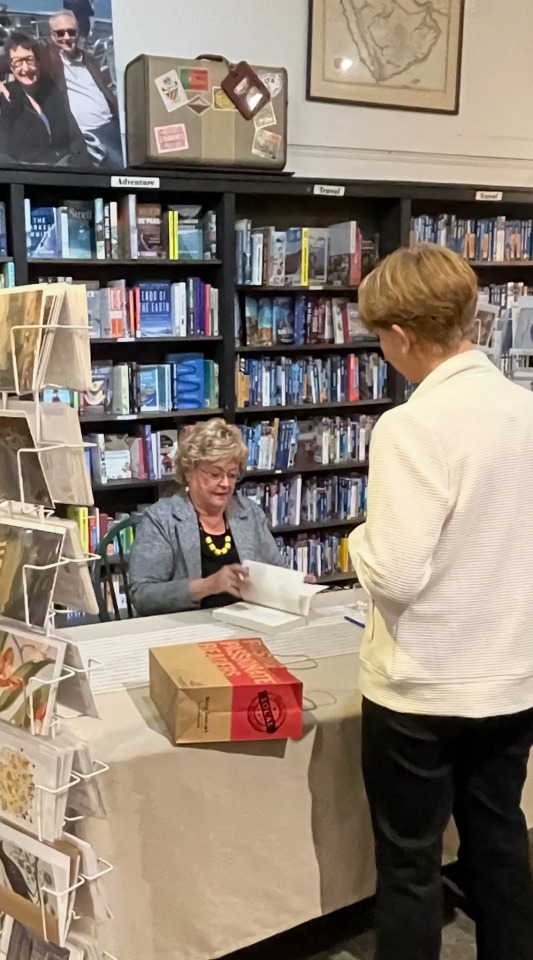
0 notes
Text
A “rose by any other name…” would be a soap or a lotion like that made by Caryl B
As February the month for sweethearts, flew by, Marin County’s personal care products maker Caryl B released another variety of cream/lotion and soap; one made with roses.
“The rose fragrance welcomes spring,” said Caryl B founder and owner Caryl Brandes.
The appeal of a rose is universal and its qualities are not only ancient but beneficial.
It’s no wonder that people the world over from Shakespeare to Cleopatra recognized its significance.
Brandes didn’t want to miss the opportunity. Her line of rose-inspired skin care products debuted on February 21.
Now available in Brandes’ signature Shea Butter hand cream and Shea Butter lotion, the windy and often unpredictable weather of March will be deterred from chapping & upsetting skin by this newest addition to the line of Caryl B products.
“Infused with the much loved fragrances of roses, this cream & lotion will leave your hands feeling soft and hydrated,” said Brandes.
Using rose oil from rose petals, Brandes has taken her bestselling hand cream and lotion compound and made it wonderful for all skin types. “But especially for sensitive and delicate skin,” said Brandes.
Pointing as to why the use of roses in health and beauty, has continued over the centuries dermatologist, Dr. Debra Jaliman, MD clarified.
“Rose essential oil is hydrating and anti inflammatory.” Both the essential oil of a rose and the enchanting aroma…
Extracted, usually by steam distilling process… “It comes from the petals,” added Jaliman.
Regardless of anything romantic, from a science perspective “roses contain polyphenol and flavonoids, which are anti-inflammatory,” said Jaliman.
And, what that means for the skin as Jaliman explained is… “roses do help in the decrease of redness/inflammation and irritation.”
“This is why roses have been used in skin serums and creams for years and years,” said Jaliman.
Fossil evidence hints that roses in some form have been on the earth for perhaps 35 million years.
While some sources say, roses have been used in some form of skin care for at least 5,000 years, Egyptologists can be more specific.
As explained by the UK’s University of York, Archaeology Department expert Professor Jo Fletcher, PhD., stated.
“I only know of references to roses from very late in Egypt's history,” said Professor Fletcher.
“An example I refer to is the Graeco-Roman Period,” she said.
“Roses were linked to the Greek goddess Aphrodite,” said Fletcher.
“So, when the Greek Ptolemy dynasty (of which Cleopatra was a part of) ruled Egypt we find more evidence for roses since the Ptolemy dynasty equated Aphrodite with Egypt's goddess Isis.”
Professor Fletcher explained further. “Over time, the Egyptian goddess Isis became known as the ‘Rose-breasted Lady'. Cleopatra embraced this.”
And, said Fletcher “as I discuss in my book 'Cleopatra the Great', this most famous female pharaoh (who herself claimed to embody Isis) is described giving one of her legendary banquets in honour of her last husband Marc Antony, when ‘the floors of the dining rooms were strewn with roses to the depth of a cubit’ that’s about (1 and half feet),” said Fletcher.
Appreciating the reference to Cleopatra, Brandes knows that roses are also luxurious. And, that is why Caryl B is including Goat Milk and Glycerin Soap in the rose essence fragrance.
A commitment to high quality and excellence is what Brandes wants to ensure in all of her products, so that her customers can enjoy “gifts that pamper.”
This coming weekend of March 7th 8th & 9th, Caryl B will be among the artisan vendors at The Marin Arts & Crafts Show at Marin Civic Center - Exhibit Hall from 10: AM until 6: PM. For details about Caryl B products visit the website.
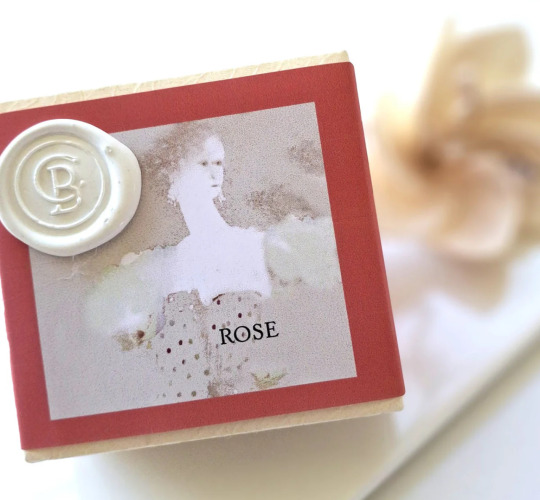
0 notes
Text
Hold the Foam! Marin-based artisan skin care maker Caryl B just introduced an Organic Liquid Soap line with Shea Butter
With global sales of liquid soap valued at over $22 billion dollars last year, the entrepreneurial spirit of Caryl Brandes of Caryl B Personal Skin Care products couldn’t ignore the obvious. Her new organic liquid soap with shea butter is a lovely addition to the moisturizing soap bars.
As 2025 dawned, Brandes introduced her own Organic Hand & Body Liquid Soap with Shea Butter.
Always focused on highest quality and the best ingredients for skin and wellbeing, Brandes’ dilemma was “should it be an unscented liquid soap or a ‘foaming’ liquid soap?”
The debate between regular liquid soap and foaming is extensive. And, there are valid arguments on either side.
Liquid soap in either form is certainly more hygienic than bar soap, especially where family consumption is prevalent.
Since 2020 when COVID-19 hit, the concerns of hygiene has transformed the soap and skincare market.
Yet, while ‘foaming’ soap is considered as more efficient (foam uses less water to rinse), the moisturizing aspect for Brandes is vital.
“All of our products at Caryl B are designed to be ultra-hydrating, allowing skin to be nurtured and replenished,” said Brandes.
While ‘foaming’ soap can be made with very simple and organic ingredients, much of the “foam” comes not from the actual soap ingredients but rather from the “air” mechanism in the pump-bottle itself.
“If you add a rich moisturizing ingredient like Shea Butter, said Brandes, the specially-made pump mechanism in a ‘foaming’ soap won’t work.”
Even as customers of Caryl B were looking forward to a “foaming” liquid soap, Brandes wanted to maintain the same anticipated result and high quality of a satisfying moisturizing product, that her customers expect and trust.
“And the ultra-moisturizing quality along with high quality fragrances, it’s what makes Caryl B exceptional,” said Brandes. “I bwanted to maintain that level of exceptional in the new liquid soap series.”
Understanding the importance of such an ingredient, Dermatologist, Dr. Debra Jaliman, MD said. “Shea Butter is a natural emollient.”
As winter continues, Jaliman noted. “Shea butter has anti-inflammatory properties, especially for washing hands, which can soothe dry, chapped skin.”
The fatty acids in Shea Butter create a barrier that contains and holds in moisture. This aspect helps with dry, flaky skin, especially in the wintertime.
In addition to the Caryl B line of soaps, creams and lotions, Brandes noted. “We offer soothing bath salts.”
“Our therapeutic bath salts are a combination of pure Dead Sea and Himalayan pink salts.”
“These ancient salts, said Brandes, have the highest mineral content which helps for reducing inflammation and promoting relaxation and hydration.”
“Bath Salts are a good compliment to our selection of soaps,” said Brandes.
“And, I’m so pleased that we can now offer a high quality organic moisturizing liquid soap,” she added.
Caryl B Organic Hand & Body Soap with Shea Butter is available in three fragrances: Gardenia, Plum Blossom and Fresh Sage.
Unscented is also available. To purchase directly and for more details, visit the Caryl B website.

0 notes
Text
Sausalito Center for the Arts hosts 2nd annual Figurative Art exhibit
One of the most beautiful and personal – yet surprisingly – still controversial expressions of art – is the human form.
The body has been a subject of art since humanity’s very first attempts at artistic expression.
Opening on January 8, Sausalito Center for the Arts (SCA) will host their second annual figurative art exhibit entitled, “Here/Now: The Bay Area Figurative Movement Grows.”
The exhibit’s curators Susan R. Kirshenbaum and Catherine Merrill took a few moments to speak about the significance of the exhibit and its meaning.
In correlation with previous figurative art exhibits, especially in the San Francisco Bay Area, Kirshenbaum noted.
“Today’s narrative, expressive phase of the Bay Area figurative movement is about reflecting on the world we live in. (Hence this year’s exhibit title ‘Here/Now…’)”
“We are telling stories that reach beyond academic achievement and accuracy,” (especially in the traditional and classical sense) said Kirshenbaum.
“We are truth seeking,” said Kirshenbaum. “Sometimes we embrace the un-beautiful,” she said. “Or create beauty for its own sake.”
“Our work as artists might reflect our personal struggles or the tensions that surround our lives,” said Kirshenbaum.
“We are presenting a range of 25 selected artists, she said, who focus on the figure. These artists all live and work in The Bay Area.”
“Each is grounded in the figurative movement,” she said. “Yet, each of them continues to explore and express their humanity through portrayals of the figurative form in context.”
Speaking from her own perspective and experience, sculptor Catherine Merrill was eager to point out.
“This exhibit affirms the figurative art of the past. But like all art, the artist is expressing the feelings, thoughts and ideas of the world the artist lives in.”
“The 25 artists we have gathered for this year’s exhibit, said Merrill, are some of the most talented in The Bay, and what they express is relevant to today.”
Despite what goes on in the world, as Merrill exclaimed, “the creative process is a cause for joy; even amid the most challenging and difficult of times.”
Merrill is obviously deeply concerned about our lives today as she said.
“Art is about connecting; connecting with the physical world and with people.”
In addition to Merrill’s background as a dancer and being involved with live performance before becoming a full-time sculpture artist, “I was very much formed by the 1960s,” she said.
The Civil Rights Movement, the Women’s Liberation Movement, the Peace Movement, The Free Speech Movement as well as the Environmental Movement all occurred within Merrill’s lifetime and generation.
“I am concerned that as an American society we are losing our footing and are failing backwards.”
“For me the arts, especially sculpture, is all about the physical, tangible, tactile world.” Merrill said.
She mentioned neurologist Frank R. Wilson’s 1998 book, “The Hand: How its use shapes the brain, language & human culture.”
“I agree with Wilson that when we use our hands, create things, build things with our own hands, our brains improve and grow.”
Noticing the various trends that contemporary culture and tech culture has influenced, Merrill said.
“Working with one’s hands leads to discovering the world in a very specific tactile way.”
“Most of us don’t rely wholly on photographic reference material, said Kirshenbaum, and instead we carefully observe and interpret our life models, conveying our shared stories through our artistic interpretations.”
“It seems that today’s contemporary art culture is pre-occupied with following trends,” said Merrill.
For example, Merrill said. “I think it’s important to recycle.” “But I don’t want to do art about recycling.”
“Again, reiterated Merrill, art is about working with one’s hands; and it’s about connecting with the world and with people.”
In addition to co-curating the exhibit with Kirshenbaum, Merrill will be showing four large wall sculptures.
Each one is eye-catching, not only with a vivid sense of color and texture, but each one has a human figure central to the composition.
To emphasize the importance of connectedness, the piece entitled “Brothers” reflects Merrill’s belief that humanity and the plant world are truly linked as one.
The robust naked man leaning next to the tree has literally become at-one with the tree. His masculine physique reflects the beauty and strength of the tree.
“Think about it for a moment, if it wasn’t for trees and plants, humans couldn’t breathe,” said Merrill.
In addition to sculpture, the “Here/Now” exhibit also features life drawing.
Kirshenbaum will be exhibiting a piece of her work in The Drawing Group portion of the show, and she said. “The exhibit pays tribute to life drawing groups everywhere.”
About ‘The Drawing Group’ at the upcoming exhibit, Kirshenbaum said.
“We are bringing awareness to the subculture of drawing groups everywhere which continue to grow and maintain a large following of dedicated artists well beyond art school.”
Explaining further Kirshenbaum noted. “Our group is made up of artists who have been meeting for over 30 years, led by the San Francisco painter John Goodman.”
“We meet weekly at John’s Box Factory Loft studio in The Mission District of San Francisco,” said Kirshenbaum.
“John describes it, noted Kirshenbaum, as ‘a weekly fellowship of smart, talented and congenial people'. Each dealing with the ‘why’ and sometimes ‘how’ they draw.’”
“Each artist in the group shares the cost of hiring live models as well as some snacks and beverages to fuel the process of the group.”
“The poses, the shapes, gestural movements, opportunities of inspiration and spontaneity emerge on paper. One artist describes the process as a ‘synthesis’ of layers of drawn images in the hands of an artist.”
Using technology to help in making or enhancing art is okay. But it’s relying entirely upon technology without the tangible, tactile experience of the physical world that is of concern to both Merrill and Kirshenbaum.
“Use of live models is crucial,” said Merrill. “Their presence is tangible, creating a real, honest-to-goodness essence, interacting in a room with the artists,” she added.
Stephen Namara is one artist who is featured in the exhibit. He employs various drawing techniques in his distinctive style of figurative art.
Since the 1970s, Namara has been an important contributor in The Bay Area figure artist’s community.
Described by independent-artist and curator Karen M. Gutfreund as “exquisite” and “masterfully drawn” Namara’s work continues to inspire.
Gutfreund is affiliated with several groups including the Northern California Women’s Caucus for Art.
This ambitious showing of diverse, multi-generational artists, using a wide variety of materials to create their work, are likely to inspire fellow artists, patrons, and viewers alike.
The exhibiting artists are:
Joseph Abbati
Doug Andelin
Isidoro Angeles
Adam Caldwell
Sandy Frank
Tebby George
Mary Graham
Susan R. Kirshenbaum
Calvin Lai
Kim Larson
Catherine Merrill
Stephen Namara
Diane Olivier
May Shei
Sandra Speidel
The Drawing Group:
Dwight Been, Henry Bridges, Daisy Eneix, John Goodman, Susan R. Kirshenbaum, Pamela Mooney, Alex Rosmarin, Peter Steinhart, Barbara Tonnesen, and Dieter Tremp.
Opening on January 8 “Here/Now: The Bay Area Figurative Movement Grows,” is to be held at Sausalito Center for the Arts, 750 Bridgeway at (Anchor St.), the month-long exhibit will continue until Feb 2, 2025.
An Opening Reception with live music and refreshments will be held on Jan. 11 from 3-6pm.
For more details regarding lectures, talks and events planned during the exhibit, visit the Sausalito Center for the Arts (SCA) website.
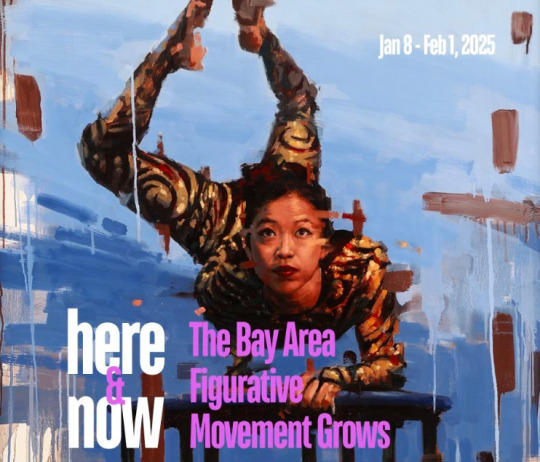
#sausalito#Sausalito Center for The Arts#figurative art#Catherine Merrill#Susan Kirshenbaum#Stephen Namara
1 note
·
View note
Text
Shopping Local Makes an Impact, notes CAMEO CEO, Carolina Martinez
With the countdown to December 25 now measured in hours, last minute shopping will no doubt be for the “procrastinators.”
Such procrastinators will just have to shop locally. And, if so, that will help local merchants immensely.
61 percent of business owners say that holiday revenue is key to the success of their business.
According to recent data by the National Retailers Federation and others, over 233 million Americans will do some shopping right up until just before Christmas.
“Spending money at local, small businesses circulates two to four times more in the local economy than it does at those ‘big box’ stores,” said, Carolina Martinez, CEO of CAMEO Network.
CAMEO is California’s statewide micro-business network and a leading voice for businesses with one to five employees.
Martinez has been CAMEO’s CEO since October of this past year. She took a few minutes to speak about the impact consumers have on local economies.
“The holiday season is a ‘make or break’ moment for many small businesses,” added Martinez.
According to Statitica as well as other researchers, 71 percent of holiday gift buying occurs online. This leaves local merchants at a disadvantage.
Regardless of it being a small or large purchase shopping local still makes an impact on the local economy.
Having events in town is vital for local businesses “so any activities that encourage people to shop small business are good for the economy,” noted Martinez.
Holiday shopping events like a ‘holiday market’ are always great for the community,” exclaimed Martinez.
Mentioning destination spots like Northern California’s wine country, Martinez said.
“Putting together fun events like ‘shop, sip & savor’ helps bring more traffic to local stores and encourages people to shop small.”
“It’s a win-win for the community and businesses,” she added.
The local chamber of commerce as well as other local organizations can help.
“I highly recommend that communities and businesses consider the help of available resources like nonprofits.”
“Nonprofits (like the CAMEO Network) can offer free or low-cost coaching to help small business owners improve their marketing and help get more traffic in the door,” Martinez said.
Recognizing the sense of empowerment as well as a sense of community, Martinez said. “I think it’s very important for everyone to educate their friends, family and neighbors about how important it is to shop small business.” The impact can make a difference.
Emphasizing the ‘ripple effects,’ Martinez said. “There are so many benefits!” “For instance, shopping locally can also cut down on environmental waste associated with plastic packaging and shipping.”
Seeing shopping locally as a way to socialize, Martinez said.
“Another idea that I’ve personally done and have had a good time doing is the opportunity of a ‘private shopping party;’ a small boutique that I know offered me and friends of mine the opportunity to close the shop to the public.”
It made for a unique and one-of-kind experience not only for Martinez and her friends but also for the boutique owner and the staff.
Martinez also said. “Spending time in the local community helps other businesses besides shops. It helps restaurants.”
Coincidentally, (in the wine country) restaurants, like the newly opened Mozaik at Sonoma’s historic downtown plaza, the owner and staff offers gift certificates.
A gift certificate for night out at a local restaurant might be the best gift for that ‘difficult-to-buy-for’ person on the Christmas list.
As Martinez points out and hopes people will remember even as this year’s holiday shopping concludes; “For every dollar spent at a small business 0.68 cents stays in the local business community.”
“Small businesses are the heart of our communities, Martinez reiterated, and when you shop local, you’re investing in the strength of those local communities.”
To learn more about the CAMEO Network and how it can help local businesses visit the website.

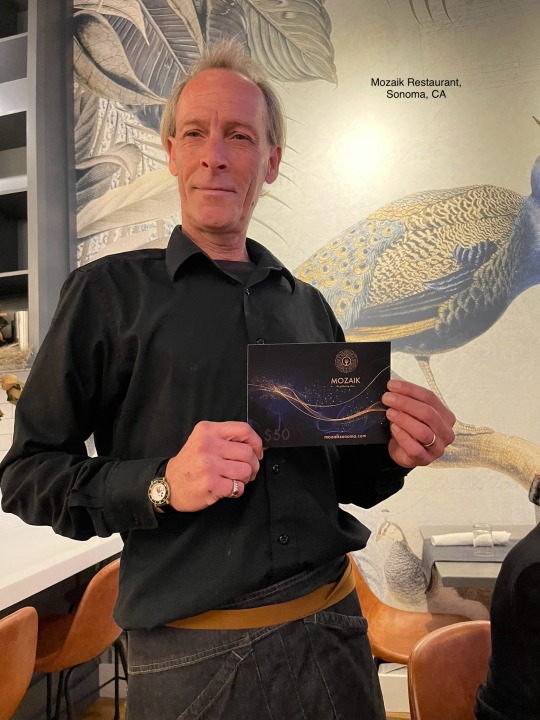
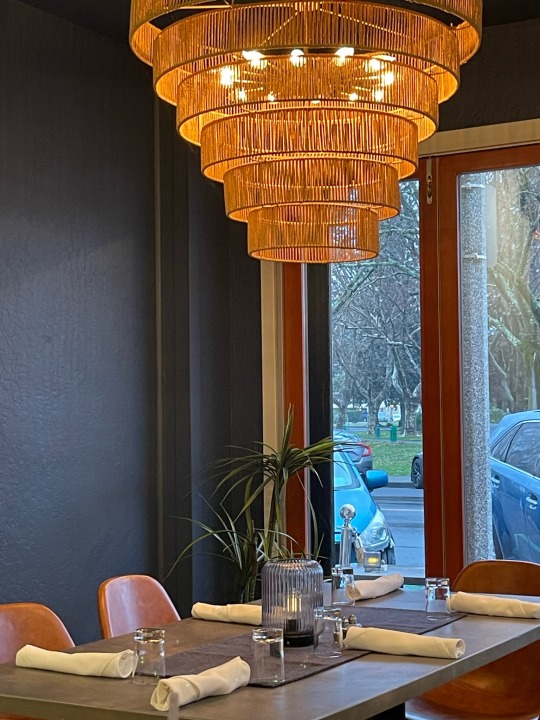
0 notes
Text
Golden Gate Heights resident of San Francisco, delights in the annual Dickens Christmas Fair
Known for its 163-tiled steps leading to scenic views of the Western-side of San Francisco, Golden Gate Heights is home to over 11,000 people.
Among those people is resident Therese Porter. She is Co-Director of Entertainment and Director of Street Theatre at the Dickens Fair.
Known for its unique one-of-a-kind ‘Immersion theatre’ experience, the annual Christmas event is celebrating its 40th anniversary this year.
As someone who knows the works of writer Charles Dickens well and has portrayed various characters from his books like Mrs. Finching, a character from, the Dickens novel, ‘Little Dorritt,’ Porter took a few minutes to speak to the Westside Observer.
She took some time to chat, away from the busy schedule of rehearsals and the last-week coordinating of one San Francisco’s most long-standing holiday performance traditions. The last day to attend the fair is Dec. 22. She talked about how women in Dickens stories are impacted by poverty. And, since Porter is well acquainted with many of the women characters of the Dickens novels, the question was asked.
Why does Dickens’ writing on poverty stand out from all the other 19th Century writers of his time?
“Charles Dickens was one of the few writers of his day that actually experienced poverty first hand,” said Porter.
Dickens had to leave school at age 12 to work in a boot-blacking factory for at least 10 hours a day to help support the family because his father was sent to ‘Debtor’s Prison.’
“His father, John Dickens, had always lived above his means, even as his family and his career continued to grow,” said Porter.
“We know from his writings and his autobiographical fragments that being forced out of the family home and into work at such a young age, not to mention being exposed to the dangerous and chaotic life of the London working poor, had a profound effect on his life and work,” she added.
The strata of the various working and lower classes in Victorian England are all featured in Dickens’ writings. “It’s at a depth and scope not really covered in the works of other writers of his time,” said Porter.
Satirical writers of the period such as William Thackeray (author of ‘Vanity Fair’) did write about poverty. Yet, as Porter noted. "Other writers such as Thackeray and George Eliot mentioned the poor and lower classes in their work, but not with the detail and sympathy Dickens brought to the topic.”
Dickens wrote more about the conditions of the poor than any other writer. “Throughout his life and in his works, Dickens was incensed the hypocrisy of people who were in a position to do something, and yet did very little or nothing,” said Porter.
She also noted that London was the largest city of the world at that time. “The wealthy and elite were making fortunes exploiting the labour of the growing working and working poor classes who they viewed as a nuisance and some sort of ‘other’ species,” said Porter.
There was an effort in Great Britain to facilitate reforms in public health, education and laws that affected the poor, and Dickens' works played an enormous part in that effort, as well as bringing the problems to a wide audience.
As many scholars and historians point out, part of the power of Dickens' writing derives from his use of archetype, and his unique approach to character and personality.
Porter agreed. Dickens spent time in his youth as a court reporter, and he learned to observe personalities. He was able to transform “stock characters” or “cardboard cutout villains” into memorable characters. Dickens drew much of his inspiration from real life people he observed.
Dickens was able to quickly paint a scene with “just a few brush strokes,” said Porter, as it were, with his literary paintbrush of a pen upon a story-setting canvas.
When asked… From your experience and perspective as you see Dickens, what is or was the “archetype” of poverty and its impact upon women and society?
“It’s difficult for us to fathom today the perils of poverty that so many people faced in 19th Century Britain, especially women,” said Porter.
Simple injuries or illnesses that we today can easily heal from could be catastrophic or fatal for working people and the poor. What we take for granted in terms of dealing with chronic conditions, injuries and disease could not be managed by the medical knowledge of the time,” noted Porter.
Life expectancy was short and mortality rates especially for women and children were very high.
“Although he did resort to archetypes and cardboard cutouts for some characters, said Porter, Dickens could portray women with great depth and compassion.”
“He could also vividly convey their backstory,” she said.
Yet, ironically, Porter noted. “Away from his work in writing, Dickens never really understood women. He was a difficult person to deal with in real life.”
In his younger days, “Dickens was very passionate and often romanticized the ideal wife as ‘an angel’ young, sweet & beautiful,” Porter said.
Dickens had 10 children with wife Catherine. Only eight of the 10 reached adulthood.“However, noted Porter, Dickens made sure all of his children were educated, even the girls.”
Sadly, the relationship he had with wife Catherine deteriorated. And as University of York, Dickens scholar, Professor John Bowen, told The Guardian UK back in 2019, “If he (Dickens) could have her (wife, Catherine) declared mad; and she could be confined to an asylum, he could live as he pleased and nobody would think badly of him.”
Admitting that Dickens could be narcissistic at times, Porter said, “Still, his problematic relationships with women in real life didn’t diminish his capacity as a writer to portray women as strong and resilient. This portrayal appears throughout much of his works.”
“With all the current social and cultural changes happening today, I think what the Dickens Fair offers people is truly unique,” said Porter.
“We present a one-of-a-kind ‘immersion theatre’ experience that visitors can experience and connect with in person rather than just looking at a screen.”
“It seems as if for most people today, said Porter, much of work and daily activity is spent interacting with a screen or some sort of electronic device.”
“What we offer at the Dickens Fair is an opportunity to see humanity (and a view of a specific history) from a different angle in real time in person.”
While much has changed since Dickens’ time more than 150 years ago, “there’s so much that hasn’t changed “ said Porter. “The tyranny of capitalism is still alive,” she said. “And, yes! The Scrooges of our time as well.”
The Dickens Fair concludes its five consecutive weekends, from Nov 23 to Dec. 22 at the Cow Palace. Sunday Dec. 22 is the very last day for this 2024 holiday season. For those who don’t like the rainy weather, keep in mind, the Dickens Fair is indoors and a generous expanse of the Cow Palace. Shuttles are available to take attendees back and forth so to save on extensive walking to and from the parking lot and avoid the raindrops. For more information and to p purchase tickets visit the website.


0 notes
Text
Sonoma Preservation League Gathers for Holiday Celebration
A fair representative of Sonoma’s civic and philanthropic community leaders showed up at the annual holiday gathering of the Sonoma League for Historic Preservation at Maysonnave House on December 10th. They were welcomed by League President Chip Allen and League Executive Director Robert Demler.
Previously, only three months ago in September, League members gathered in the adjacent garden of Maysonnave House to honor and celebrate the work of the Sebastiani Theatre Foundation for its preservation of the iconic structure and to honor Roger Rhoten for his 33 plus years of stewardship of the Sebastiani Theater.
Since its inception, the League has worked for over five decades to preserve Sonoma’s historic heritage and integrity as one of California’s oldest “Mission Towns,” dating back to the days of the padres and the rancheros of old Spanish/Mexican California.
League members were pleased that so many attended that Tuesday evening despite the chilly night air. While the garden would have been an ideal setting for the holiday gathering, chilly temperatures, shorter daylight hours and winter shadows pushed attendees to stay inside.
This gave everyone an opportunity to enjoy one of old Sonoma’s most historic houses. Maysonnave House was decorated in holiday trimmings, much to the delight of all.
“I’m a native of Sonoma,” said Christine Janson and this setting is very reminiscent of what holiday celebrations were like here when I was growing up.”
Janson whose maiden name was Delara, attended Sonoma Valley High as well as St. Francis Solano Elementary School. “I made a point of returning to Sonoma to raise my family,” she said. Now retired, she wants to devote more time to groups and organizations like the Sonoma League for Historic Preservation.
Standing near the front door, Janson was in an ideal spot to greet people as they entered. Former Mayor of Sonoma Jack Ding talked with Janson as he walked through the door. Ding now serves on the Sonoma City Council. “I want to use my experience as a financial professional to help our entire city better prepare or tomorrow,” he said. both he and Jenson noted that with rising costs, it’s very difficult for our local businesses to compete and thrive.
Just as their conversation started, local civic leader Gina Cuclis entered and was warmly greeted by Janson and Ding.
Cuclis is a presence in Sonoma and for over the past 10 years has served the town of Sonoma and the County in various roles and capacities. Cuclis is now since 2023, the Area One Trustee on the Sonoma County Board of Education, the governing body of the Sonoma County Office of Education, representing Sonoma Valley, Oakmont, and Rincon and Bennett Valleys in Santa Rosa.
When asked if she would be serving any of her delicious homemade ‘Spanakopita’ (spinach and Feta turnovers) at her house as she did last year for the holiday season, she replied. “No! We will be in Europe for Christmas this year! I’m really looking forward to it.” “It will be a special trip; especially for the holidays!” She added.
League member and husband of Board member Linda Jackson, Hewitt Jackson was eager to make sure everyone had something to drink and eat as the hors d’oeuvres and cocktails were plentiful. The choicest of beverages was mostly the sparkling wine from where else, but Sonoma.
This was happy news for Robyn Sebastiani who is the Executive Director of the Sonoma Valley Vintners and Growers Association. She was pleased to attend at the last minute.
The Sebastiani family has been a part of Sonoma for well over a century and, even though the original Sebastiani Vineyard and estate was sold to the Foley Wine Group in 2008, the presence of the Sebastiani family and its descendants remains. “Living in the beautiful Sonoma wine country in pursuit of the sweet life, is a balance of achieving new heights of business success while passionately living life to its fullest,” says Robyn. And as she has noted, “Building the sweet life isn't possible without a sound investment strategy.”
Janson would agree, especially when it has to do with building strong bonds and relationships. That is something that the League works diligently to do and is constantly encouraged by City Councilman and local Landscaper Ron Wellander who was an early arrival at the event.
One couple who has certainly worked on creating bonds and relationships that foster community is Simon and Kimberly Blattner. For more than 20 years they have been committed to making Sonoma and its surrounding valley a caring place. They have served Sonoma in a variety of ways, from being on the board of Sonoma Valley Fund, or on the boards of Sonoma Land Trust and the Sonoma Valley Hospital Foundation to name only a few. Simon and Kimberly’ tireless work in the nonprofit circles, especially for the Sonoma community, has been a beacon of inspiration to many.
This is why gatherings in town like the one held on Tuesday at Maysonnave night are vital in keeping alive the strong sense of place that is treasured by all of us who are fortunate to reside in Sonoma Valley. To learn more about the Sonoma League for Historic Preservation, visit the website.
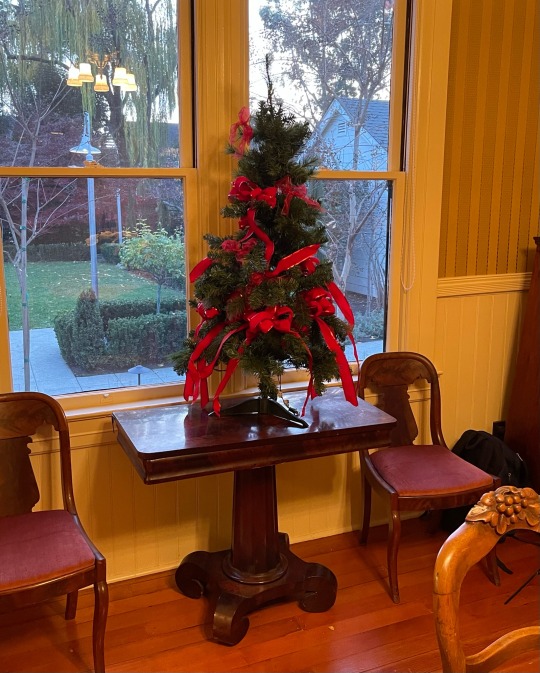
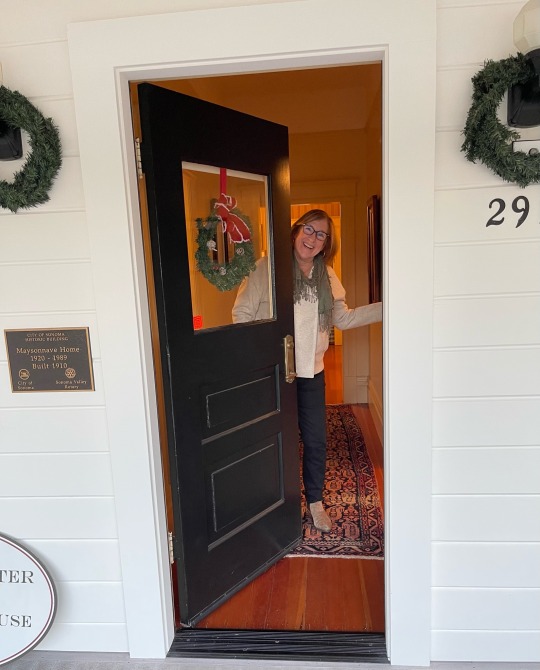
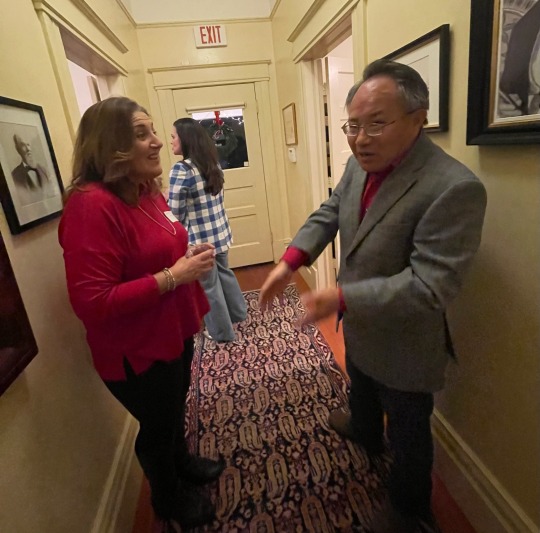
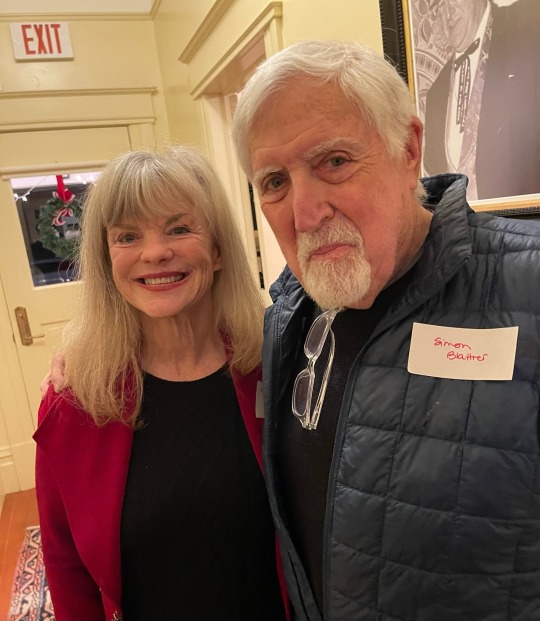
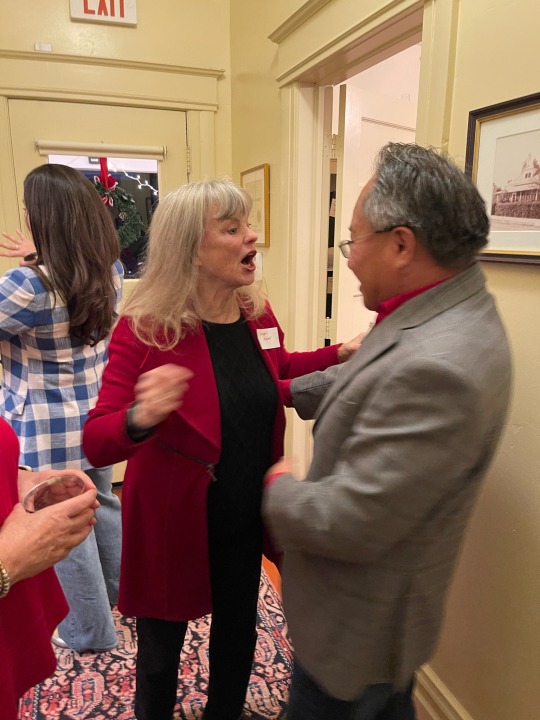
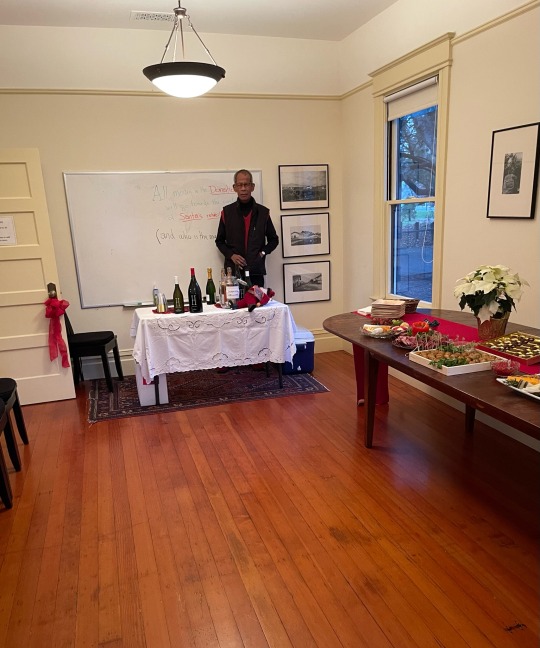
#sonoma#Somoma League for Historic Preservation#Maysonnave House#Gina Cuclis#Simon and Kimberly Blattner
0 notes
Text
Culinary Travel Author, Carole Bumpus to be among the vendors at Holiday Market in Wine Country
As the days get shorter and the chill of winter fills the air, one way people for centuries have shrugged off the doldrums is to have a holiday market.
Originating in Europe, since the late Medieval era a Christmas or holiday market was a way in which people could eat, drink and gather during the peak of winter season.
While many people tend to think of Wine Country as a summer through fall destination-activity, few know that Northern California’s Wine growing region offers some of the best winter season experiences, that can in some instances, rival those of Europe.
This year, Bricoleur Vineyards in Windsor, not far from Healdsburg and Geyservile, is hosting a holiday market on December 14 and 15.
Also, similar in someways to Germany’s Rhine River Valley, (which has always had a winter holiday market) Northern California’s Russian River Valley offers stunning scenery and some of the best wines, of which Bricoleur is pleased to provide.
Bricoleur Vineyards Events Manager, Teina Moore explained. “It’s an incredible family-friendly event celebrating the festive season.”
Over a dozen vendors and artisans will be participating that Saturday. It will be an ideal opportunity not only to enjoy delicious food and wine, but to also shop for unique items and gifts.
Among the vendors at this year’s holiday market at Bricoleur is culinary travel author, Carole Bumpus.
Her latest book, “Adventures on Land and Sea - Searching for Culinary Pleasures in Provence & along the Côte d'Azur,” is part of her ‘Savoring The Olde Ways’ series.
And, while much of what she covers in her writing is the highly coveted areas of France and Italy, the parallels between what Europeans treasure most and what the Northern California Wine Country region has to offer is amazingly wonderful.
Carole Bumpus noted. “We are members of Bricoleur Wine Club, and traveled to France last May for a cruise down the Seine River with the Bricoleur group.”
Bumpus was unexpectedly surprised when, as she told this reporter, “one of my books, ‘Searching for Family and Traditions at the French Table - Book Two,’ was featured on the Cruise and a copy of the book was placed in every one of the staterooms of about 55 books.”
She immediately knew that Bricoleur was good company.
Eager to be a part of a Bricoleur Vineyards event again, Bumpus said. “This will be the first time at this holiday market as I haven’t done these in the past.”
Yet as she also pointed out, “Any time the French culture, (or any of the European cultures) are in the limelight with their food, wines, or traditions and they are celebrated, I want and love to participate.”
Relishing the prospect, Bumpus added. “The upcoming holiday market at Bricoleur is one more opportunity to get my French books into the hands of Francophiles who love good French-style wines.”
Since embarking on an unexpected culinary-Travel writing career, a decade ago, Bumpus has been praised and well-received by readers.
Pleased that Bumpus will be participating, Moore said. “In addition to showcasing local artisans and unique gifts, we’re delighted to welcome Santa Claus for a special visit, adding extra magic for the little ones.”
Emphasizing that the holiday market will be family friendly, Moore called attention to the community outreach that Bricoleur Vineyards seeks to provide.
“What makes this event even more meaningful is that the $10 entry fee will be donated to the Santa Tim Organization,” said Moore.
“The Santa Tim Organization provides gifts, food, and other support to local families in need during the holiday season.”
“It’s a wonderful opportunity for families to come together, enjoy our beautiful vineyard setting, and kick off the holiday season with cheer,” said Moore.
And, like Bumpus and the other vendor- participants at this year’s holiday event, Moore hopes that everyone who attends will, as she said…“enjoy great wine, and memorable moments.”
Bricoleur Vineyard Holiday Market opens at 10 AM and ends at 3 PM, Saturday December 14 & Sunday 15th.
For details and to purchase tickets, visit the Bricoleur Vineyards website.
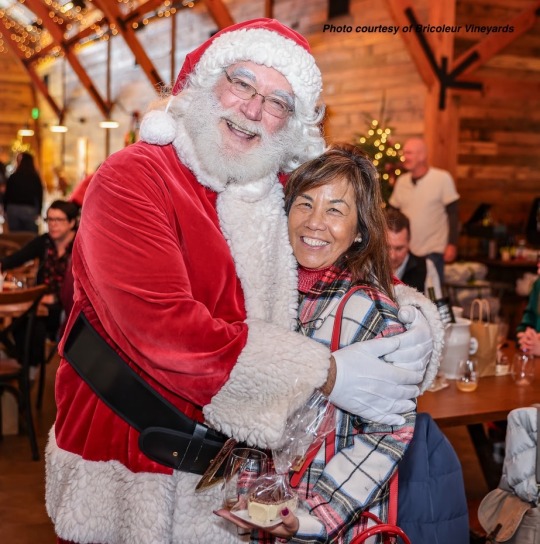
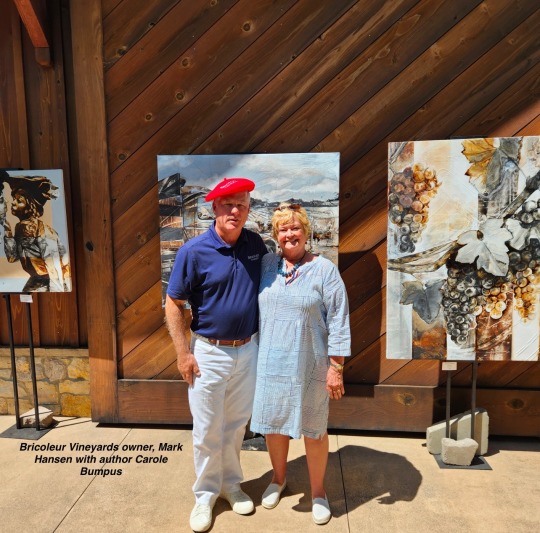
0 notes
Text
Annual Dickens Fair Begins Nov 23 before Thanksgiving Weekend!
While the novel, “The Baker’s Tale: Ruby Spriggs & The Legacy of Charles Dickens by Thomas Hauser would be a fitting commemoration of the 40th (Ruby) anniversary of the annual Dickens Fair as it begins on November 23, the weekend before Thanksgiving weekend; the producers of the holiday fair noted that there is no Ruby Spriggs character in any of Dickens’ writings.
“I’ve ordered Hauser’s book,” said Therese Porter, Co-Director of Entertainment and Director of Street Theatre at the Dickens Fair. As someone who knows the works of Dickens well and has portrayed various characters like Mrs. Finching, a character from, the Dickens novel, ‘Little Dorritt,’ Porter recognizes the appeal of writers seeking to emulate great works.
“The works of Shakespeare, Sir Arthur Conan Doyle’s Sherlock Holmes and our beloved Charles Dickens are a rich source of inspiration for ‘a pastiche’ i.e. a work based on another artist's original work
Interestingly, Hauser was inspired to write another Dickensian novel entitled, “The final recollections of Charles Dickens,” in 2014.
In both these novels written in the way Dickens told his stories, Hauser features two characters, the before mentioned Ruby Spriggs in “The Baker’s Tale…” and Amanda Winegate in the second faux novel, “The Final Recollections..”
Both women are impacted by poverty. And, since Porter is well acquainted with many of the women characters of the Dickens novels, the question was asked. Why does Dickens’ writing on poverty stand out from all the other 19th Century writers of his time?
Porter responded by saying, “Charles Dickens was one of the few writers of his day that actually experienced poverty first hand.”
Dickens had to leave school at age 12 to work in a boot-blacking factory for at least 10 hours a day to help support the family because his father was sent to ‘Debtor’s Prison.’
“His father, John Dickens, had always lived above his means, even as his family and his career continued to grow,” said Porter.
“We know from his writings and his autobiographical fragments that being forced out of the family home and into work at such a young age, not to mention being exposed to the dangerous and chaotic life of the London working poor, had a profound effect on his life and work,” she added.
The strata of the various working and lower classes in Victorian England are all featured in Dickens’ writings. “It’s at a depth and scope not really covered in the works of other writers of his time,” said Porter.
Satirical writers of the period such as William Thackeray (author of ‘Vanity Fair’) did write about poverty. As Porter noted. "Other writers such as Thackeray and George Eliot mentioned the poor and lower classes in their work, but not with the detail and sympathy Dickens brought to the topic.”
Dickens wrote more about the conditions of the poor than any other writer. “Throughout his life and in his works, Dickens was incensed the hypocrisy of people who were in a position to do something, and yet did very little or nothing,” said Porter.
She also noted that London was the largest city of the world at that time. “The wealthy and elite were making fortunes exploiting the labour of the growing working and working poor classes who they viewed as a nuisance and some sort of ‘other’ species,” said Porter.
There was an effort in Great Britain to facilitate reforms in public health, education and laws that affected the poor, and Dickens' works played an enormous part in that effort, as well as bringing the problems to a wide audience.
As many scholars and historians point out, part of the power of Dickens' writing derives from his use of archetype, and his unique approach to character and personality.
Porter agreed. Dickens spent time in his youth as a court reporter, and he learned to observe personalities. He was able to transform “stock characters” or “cardboard cutout villains” into memorable characters. Dickens drew much of his inspiration from real life people he observed
Dickens was able to quickly paint a scene with “just a few brush strokes,” as it were, with his literary paintbrush of a pen upon a story-setting canvas.
When asked… From your experience and perspective as you see Dickens, what is or was the “archetype” of poverty and its impact upon women and society?
“It’s difficult for us to fathom today the perils of poverty that so many people faced in 19th Century Britain, especially women,” said Porter.
Simple injuries or illnesses that we today can easily heal from could be catastrophic or fatal for working people and the poor. What we take for granted in terms of dealing with chronic conditions, injuries and disease could not be managed by the medical knowledge of the time,” noted Porter.
Life expectancy was short and mortality rates especially for women and children were very high.
“Although he did resort to archetypes and cardboard cutouts for some characters, said Porter, Dickens could portray women with great depth and compassion.”
“He could also vividly convey their backstory,” she said.
Yet, ironically, Porter noted. “Away from his work in writing, Dickens never really understood women. He was a difficult person to deal with in real life.”
In his younger days, “Dickens was very passionate and often romanticized the ideal wife as ‘an angel’ young, sweet & beautiful,” Porter said.
Dickens had 10 children with wife Catherine. Only eight of the 10 reached adulthood.“However, noted Porter, Dickens made sure all of his children were educated, even the girls.”
And as University of York, Dickens scholar, Professor John Bowen, told The Guardian UK back in 2019, “If he (Dickens) could have her (wife, Catherine) declared mad; and she could be confined to an asylum, he could live as he pleased and nobody would think badly of him.”
Admitting that Dickens could be narcissistic at times, Porter said, “Still, his problematic relationships with women in real life didn’t diminish his capacity as a writer to portray women as strong and resilient. This portrayal appears throughout much of his works.”
“With all the current social and cultural changes happening today, I think what the Dickens Fair offers people is truly unique,” said Porter.
“We present a one-of-a-kind ‘immersion theatre’ experience that visitors can experience and connect with in person rather than just looking at a screen.”
“It seems as if for most people today, said Porter, much of work and daily activity is spent interacting with a screen or some sort of electronic device.”
“What we offer at the Dickens Fair is an opportunity to see humanity (and a view of a specific history) from a different angle in real time in person.”
While much has changed since Dickens’ time more than 150 years ago, “there’s so much that hasn’t changed “ said Porter. “The tyranny of capitalism is still alive,” she said. “And, yes! The Scrooges of our time as well.”
The Dickens Fair continues for five consecutive weekends, from Nov 23 to Dec. 22 at the Cow Palace. For more information and to purchase tickets visit the website.


3 notes
·
View notes
Text
Award-winning culinary travel author Carole Bumpus releases new book
While the red poppy of Spring and Summer brings to mind Veterans Day, for culinary travel writer Carole Bumpus, the red poppy is one of many things that makes Provence, France more than memorable.
This November 12, Bumpus released ADVENTURES ON LAND AND SEA: Searching for Culinary Pleasures in Provence and the Cote d'Azur,
Praised by Booklist as … “a charming introduction to the South of France and an excellent reading companion to Peter Mayle's now-classics like ‘A Year in Provence’ and ‘Toujours Provence,’” Bumpus is honored and delighted by the praise.
She remarked. “I was pulled in by the delight I saw in Peter Mayne’s magical book, ‘A Year in Provence,’ as my husband Winston and I decided to go to France for the first time in the 1990s. We discovered the charm of the people and the beauty of place, high in the hills above Cannes.”
This new release is Book Four of her award-winning culinary-travel series, ‘Savoring the Olde Ways…’
Travel-literature affectionados will affirm that all of the books in her series are enjoyable as stand-alone guides in and of themselves.
In this book in particular, Bumpus is on a quest to find the real Provençe.
In recalling further that first time visit, she noted. “And, then we were hooked with the history, whether along the shores or in the mountains, as well as our love of trying the wines, olive oils, and the delectable offerings in a farmers market, including succulent olives, tomatoes, peaches, plus, strawberries as big as your fist and . . . . Oh, exclaimed Bumpus, it all was so marvelous!”
Because of the marvelous aspects of France, it was only a few years later on another trip, she unexpectedly, stumbled into an opportunity to write a historical novel. It was entitled “A Cup of Redemption.”
That unexpected experience and novel, changed the course of her career.
Since then Bumpus has continued to be an award-winning culinary-travel author, extending her adventures to Italy and beyond.
Audiences will be given a one-of-a-kind look at Provence, one of Europe’s most coveted spots.
‘ADVENTURES ON LAND AND SEA: Searching for Culinary Pleasures in Provence and the Côte d’Azur’ will provide lots of details that only someone who loves travel can share.
During the three separate excursions in the new book—from Nice to Nîmes, Moustiers to Marseilles,and San Tropez to San Remy—Bumpus invites you to come along as she uncovers the mysteries of Provençal customs, traditions, and ancient cooking.
Usually, when people think of French cuisine they often imagine an expensive and elaborate restaurant setting.
Yet, as Bumpus explained. “At its heart French cooking is really about simple foods such as onions, garlic, mushrooms, etc.”
“It can be described as ‘peasant food’ said Bumpus, a food of the people because it can be enjoyed by everyone.”
The ‘good life’ as some people exclaim about France isn’t as out of reach as one might think. As Bumpus tries to convey to the readers, the genuine ‘good life’ is to appreciate life.
Good food and gracious living is more about being open to life and nature’s bounty rather than an ‘elite-mindset.’
Bumpus has discovered in her travels of more than 25 years, that the people of Europe, especially France are more about a Joie de vivre - a joy of living than anything else.
Reviews have proclaimed the book as informative, fun, sometimes funny, and filled with goodwill,
‘ADVENTURES ON LAND AND SEA Searching for Culinary Pleasures in Provence and the Cote d'Azur, is travel writing at its best.
For more information about Carole Bumpus and her new book, visit her website.


0 notes
Text
Oktoberfest in Sonoma at Vintage House
Overcast autumn weather didn’t dampen the enthusiasm of the crowds that showed up for the second annual Oktoberfest at Sonoma’s Vintage House on Saturday, October 12.
Lines gathered outside Vintage House eager to join in the festivities which began promptly at 3:00 PM and continued until 6:00 PM that evening. The Joe Smiell Band stirred up the atmosphere with Volksmusik, the traditional style of music that is associated with Oktoberfest.
While various celebrations of autumn abound in many forms, unlike the ancient trace origins of Halloween and Harvest festivals, Oktoberfest isn’t that old. Back in October of 1810 the then Crown Prince Ludwig (who later became king) and Princess Therese of Saxe-Hildburghausen celebrated their wedding in Munich.
As the United States is a melting pot of many people and cultures from around the world, some estimates calculate that from 1800 to the present-day, over 7 million people of German/Austrian descent emigrated to America. The apex of the migration was between 1840-1914.
The contribution they made is often over-looked. Educational approaches and concepts like “Kindergarten,” classical music through such legendary musical geniuses such as Mozart and Beethoven, etc.
Yet, perhaps the most overlooked influence of German culture upon America is through food. The seemingly “all-American” hot dog, hamburger and apple pie can trace some of its roots to Germany & Austria; specifically the Bavarian region.
It is the Bavarian region that most people like to remember Germany and Austria as, more so than the outburst of WWII and its immediate aftermath Of the 20th Century.
Bavaria lends itself to a more welcoming and romantic environment. This is something that all of Sonoma County can relate to, sharing in common especially as stunning vistas, mountains, hills and valleys are also well-known in the Bavarian countryside.
Even if Sonoma has been mostly Italian and Spanish/Mexican in most of its cultural history the one thing that just about everyone can relate to at an Oktoberfest is the food.
There was plenty of bratwurst sausages (often typical made of veal, beef and or pork) served with Sauerkraut, potatoes apple strudel, and of course, a pretzel. And attendees that Saturday afternoon were satiated with a bounty of beverages, particularly beer, wine and hard cider.
A number of people showed up dressed in dirndl, lederhosen and a Tyrolean or alpine style hat. The auditorium was arrayed in the traditional ‘Weiss and Blau’ (white & blue) diamond motif that some people say represents the clouds and blue skies of Bavaria.
As The Joe Smiell Band continued to play, regardless of dancing skill or experience many people joined in the Schuhplattler, a thigh-slapping and foot-stomping dance characteristic of an Oktoberfest celebration.
Pleased that the 2nd annual Oktoberfest fundraiser was well-attended, Vintage House, Board of Directors, President, Holly Seaton, PhD spoke to the crowd mentioning that… “$15,000 was raised last year.”
And, that “the funds raised at this year’s Oktoberfest helps to fund operation costs, she said, which allows Vintage House to continue providing over 60 weekly classes, programs and valuable services for seniors within Sonoma Valley.”
As a unique senior center the basic mission of Vintage House is to enhance the quality of life for Seniors and their families. It is only the senior center of its kind, serving all of Sonoma Valley Valley. Vintage House hosts an ever-expanding array of programs and services for its members and the broader community.
In addition to a silent auction, a ‘Munzautomat’ — a life-size slot machine was built by David Seyms, the operations manager at Vintage House. And, it along with all the activities made for an enjoyable gathering.
Seaton thanked the many people who worked to make the Oktoberfest a sellout hit of a celebration. Especially acknowledging Cogir Assisted Living & Memory Care who provided a smorgasbord of food, “just as it did last year,” she said.
Olde Sonoma Public House supplied the beer and was the biergarten sponsor, offering guests three Octoberfest-style brews. And, Wines poured were donated from Sangiacomo Family Wines, Larson Family Winery and Jam Cellars.
Pomme Cider Shop & Tap Room of Sonoma provided the refreshing hard cider and Brocco’s Barn of Sonoma on Arnold Drive donated dozens of haystacks and rustic accompaniments to give the event that fall season feeling.
Seaton and staff at Vintage House look forward to another Oktoberfest next year and hopefully many more years to come.
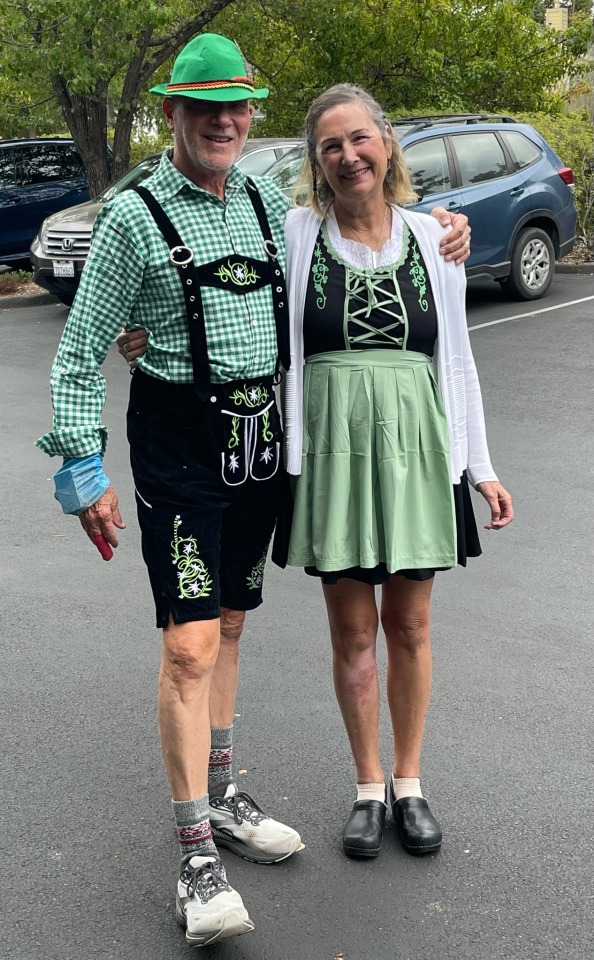
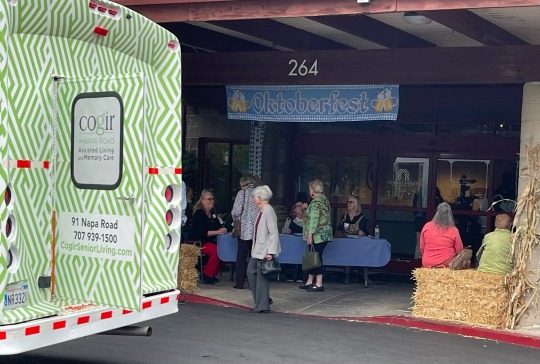
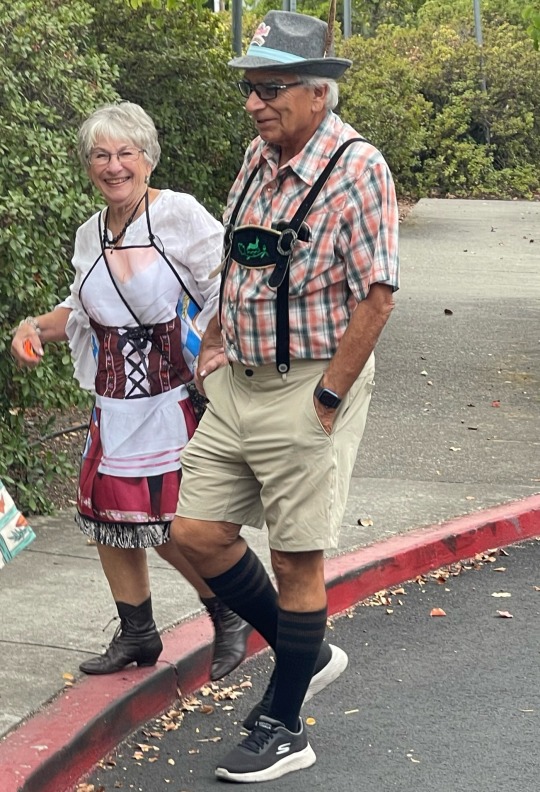
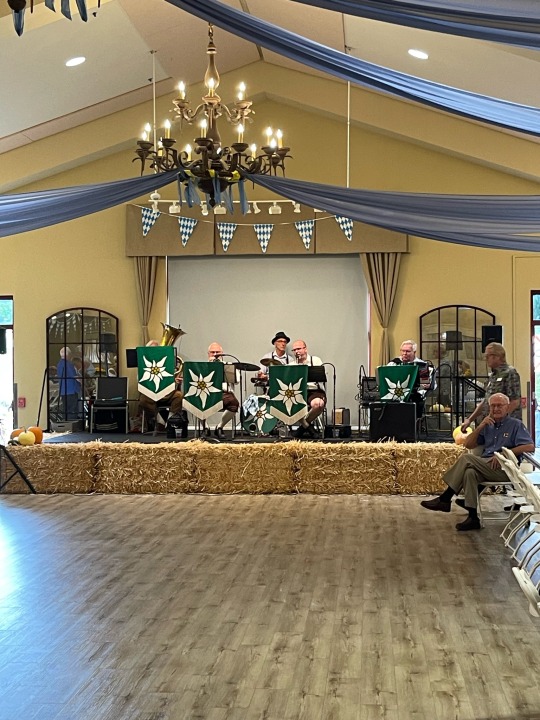
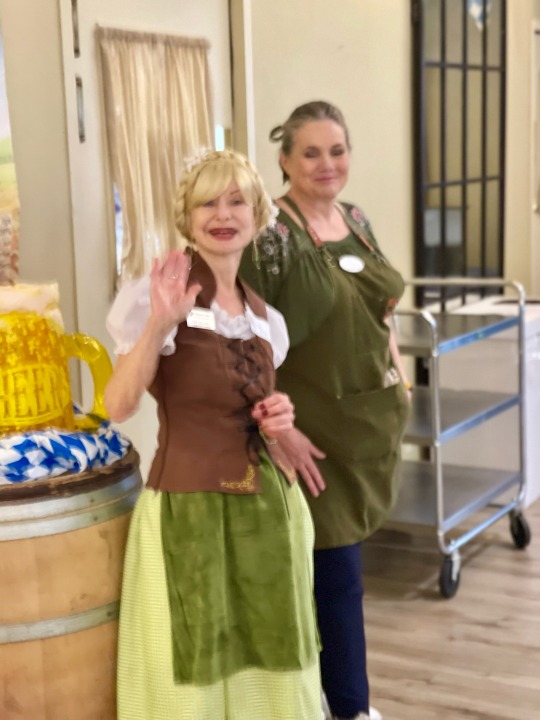
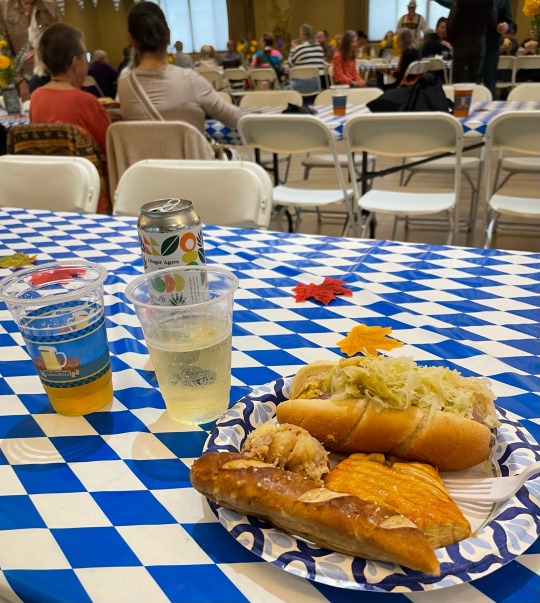
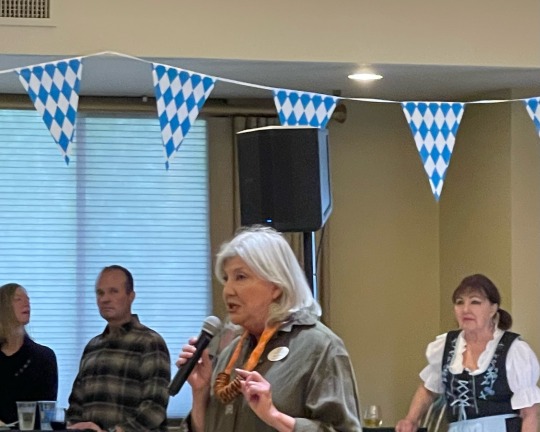
0 notes
Text
A New Bocce Ball Club & Court is established in Sonoma
For centuries some form of rolling a ball on the ground as a game has existed. Bocce Ball is such a game. Sometimes referred to as Italy’s “second favorite sport,” Bocce Ball is played by over 25 million people in the United States.
And, in Sonoma there are now two official Bocce Ball court locations; one near the historic plaza at Depot park and the other, just newly constructed at Agua Caliente Road north of town on the way to Glen Ellen.
This past October 5 the newly formed St. Leo’s Bocce Ball Club had its conclusive tournament of the season. Typically a Bocce Ball season is from April to October. Yet as the club’s president Rick Schuhriemen pointed out, “we play even after the season, as long as the weather permits.” “This is all about having fun and getting the community together.”
From 8:AM in the morning until 7:00 PM that Saturday evening the tournament festivities were the highlight of what has been described as a remarkable journey of what was just an idea, that became a project and then a reality.
“I still can’t fathom it,” said Schuhriemen, speaking on behalf of the Bocce Ball teams as well as the St. Leo’s Catholic Church Men’s Club.
“It was always our intention, said Schuhriemen that as the idea turned into a project, that the Bocce Ball courts would be something for the entire community not just the parish members.”
He was adamant to say… “this is not a competition to rival the Bocce Ball teams at Depot park.” “We were simply trying to think of something to help build community and bring people together,” added Schuhriemen.
Much of what inspired the Bocce Ball courts at St. Leo’s into existence was because of COVID-19.
There was little to nothing to do “and a number of us in the men’s club were sort of forced into retirement because of COVID,” said Schuhriemen.
And as Schuhriemen tells it, “a few of us were just thinking out loud over a glass of wine - what if? And it just grew from there.”
There’s always been something like Bocce Ball all around the world. In France and other parts of Europe it’s called, “boules” or “pétanque.”
“Some call it a form of ‘lawn bowling,’ it has existed in some form for a very long time,” said Schuhriemen.
As noted by Wikipedia and other sources, Bocce Ball as we know it today in the United States… Initially was only played by Italian immigrants. The game has slowly gained popularity among descendant generations and outside the Italian diaspora.
Yet as witnessed recently and locally by Schuhriemen and the other members of the St. Leo’s men’s club, the appeal of the game is universal. “We encourage anyone & everyone to play, no matter if they have experience or not.”
And, what moves Schuhriemen deeply is how everything came together so quickly and with the community’s help.
“The overall estimates initially to build the courts was about $20,000.00 to $200,000 Schuhriemen stated. “But as the project gained momentum more funding was required.”
The aim was to have the best “state-of-the-art” courts and facilities available. Schuhriemen believes that has been achieved.
“The men’s club really pulled together. But what was so amazing was the community; they donated so much,” said Schuhriemen.
“Not just in money, he said emphatically, but in terms of goods and services.”
“Contractors like Silverado Contractors, landscapers, wood, gravel, cement, you name it, said Schuhriemen, if it was needed, it was provided.”
“Everything was beyond our wildest dreams,” he said. “And, yet he emphasized, just about everything we needed arrived or was offered at just the right moment or at the right amount.”
Jennifer Stark who had been helping organize the tournament event and dinner for over 160 people that Saturday evening tapped Schuhriemen on the shoulder, saying… “And, mention the little miracle.” “Talk about that,” she said.
“Well, ok!” Schuhriemen said.
As he took a breath, Schuhriemen recollected. “Something very unusual and unexpected happened, not sure if I would call it miraculous.”
“All of us were very tired as we got to the completion of the Bocce Ball courts,” he said.
“Everything was pretty much done, said Schuhriemen except the roof for the utility and storage shed.”
“Some of our men’s club members had building experience, said Schuhriemen but not much when it has to do with roofing.”
Schuhriemen recounted that a homeless man had been camping out at the creek, which is next to the meadow where St. Leo’s Church is along Agua Caliente Road.
“This homeless man appeared, Schuhriemen said, just as we were discussing among ourselves as to what to do about the roof.”
The man offered to help and was able to put together the roofing. “And soon as he finished the work, he was gone,” said Schuhriemen.
There have been legends in Catholic-Christian folklore that speak of a worker who appears when needed. Such is the case of the Loretto Chapel of Santa Fe, New Mexico.
Between 1877 and 1881, the Sisters of Loretto at the chapel and school needed a staircase to access the choir loft. The original architect/builder had died unexpectedly.
According to the version of events passed down over the decades by the Sisters of Loretto, multiple builders were consulted. Yet none were able to make a workable solution due to small space constraints of the initial size of the chapel.
The nuns prayed, saying a nine-day Novena of prayers in honor of St. Joseph, the patron saint of carpenters, asking for help.
As the ninth day approached, a mysterious stranger appeared and offered to build the staircase. He worked alone using only a few simple hand tools and disappeared afterwards without collecting his pay.
Much like the homeless man who seemingly appeared from out of nowhere amid the creek next to the meadow at St. Leo’s, “we offered to pay him, and get him whatever he needed,” said Schuhriemen.
“But he simply disappeared,” he added. “We fed him and as he was eating, he said he would be there when we came back with some cash.”
“We returned with some cash and a few other things we figured he might need.” “But he was gone,” Schuhriemen said.
“Isn’t that amazing,” said Stark. “It’s like it was all meant to be.”
In a very short time membership as Schuhriemen noted, has “grown to 182 members.” “We are anticipating at least 230, he said. “And next year (2025) we will add two more leagues,” said Schuhriemen.
Pastor of St. Leo’s, Fr. Jojo Puthussery, is pleased that the Bocce Ball courts have become a part of the community in such a short period of time. “This parish is now always busy, lots of activities here,” he said.
Currently, there are courts open on Tuesdays at 10:30 AM and Fridays at 9:30 AM, for more information visit the St. Leo’s Bocce Ball Club at the following website.
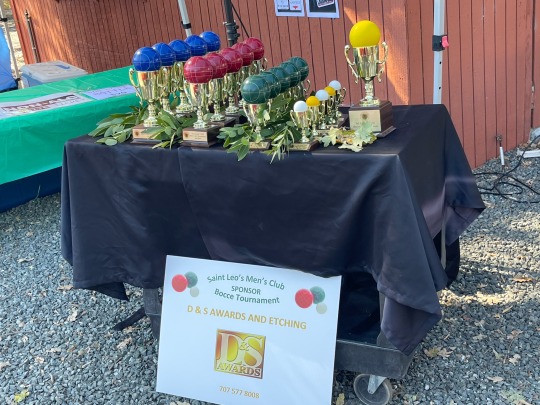
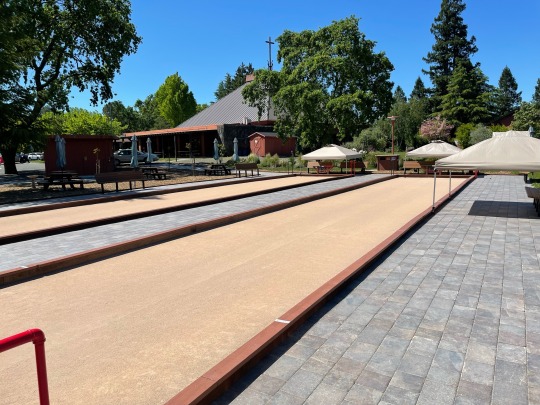
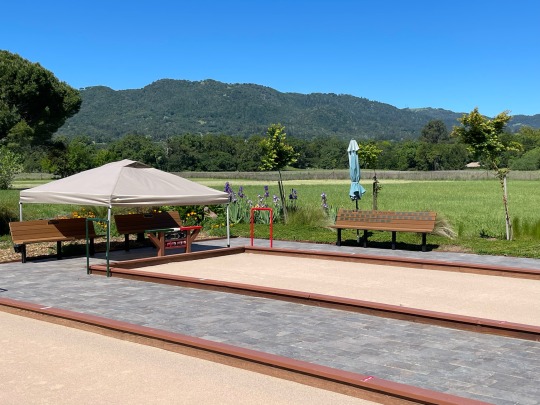
0 notes